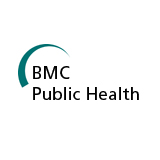
Background
Antenatal care provides an important opportunity to improve maternal understanding of care during and after pregnancy. Yet, studies suggest that communication is often insufficient. This research examined the effect of a job aids-focused intervention on quality of counseling and maternal understanding of care for mothers and newborns.
Methods
Counseling job aids were developed to support provider communication to pregnant women. Fourteen health facilities were randomized to control or intervention, where providers were trained to use job aids and provided implementation support. Direct observation of antenatal counseling sessions and patient exit interviews were undertaken to assess quality of counseling and maternal knowledge. Providers were also interviewed regarding their perceptions of the tools. Data were collected before and after the job aids intervention and analyzed using a difference-in-differences analysis to quantify relative changes over time.
Results
Mean percent of recommended messages provided to pregnant women significantly improved in the intervention arm as compared to the control arm in birth preparedness (difference-in-differences [ΔI-C] = +17.9, 95%CI: 6.7,29.1), danger sign recognition (ΔI-C = +26.0, 95%CI: 14.6,37.4), clean delivery (ΔI-C = +21.7, 95%CI: 10.9,32.6), and newborn care (ΔI-C = +26.2, 95%CI: 13.5,38.9). Significant gains were also observed in the mean percent of communication techniques applied (ΔI-C = +28.8, 95%CI: 22.5,35.2) and duration (minutes) of antenatal consultations (ΔI-C = +5.9, 95%CI: 3.0,8.8). No relative increase was found for messages relating to general prenatal care (ΔI-C = +8.2, 95%CI: -2.6,19.1). The proportion of pregnant women with correct knowledge also significantly improved for birth preparedness (ΔI-C = +23.6, 95%CI: 9.8,37.4), danger sign recognition (ΔI-C = +28.7, 95%CI: 14.2,43.2), and clean delivery (ΔI-C = +31.1, 95%CI: 19.4,42.9). There were no significant changes in maternal knowledge of general prenatal (ΔI-C = -6.4, 95%CI: -21.3,8.5) or newborn care (ΔI-C = +12.7, 95%CI: -6.1,31.5). Job aids were positively perceived by providers and pregnant women, although time constraints remained for health workers with other clinical responsibilities.
Conclusions
This study demonstrates that a job aids-focused intervention can be integrated into routine antenatal care with positive outcomes on provider communication and maternal knowledge. Efforts are needed to address time constraints and other communication barriers, including introduction of on-going quality assessment for long-term sustainability.